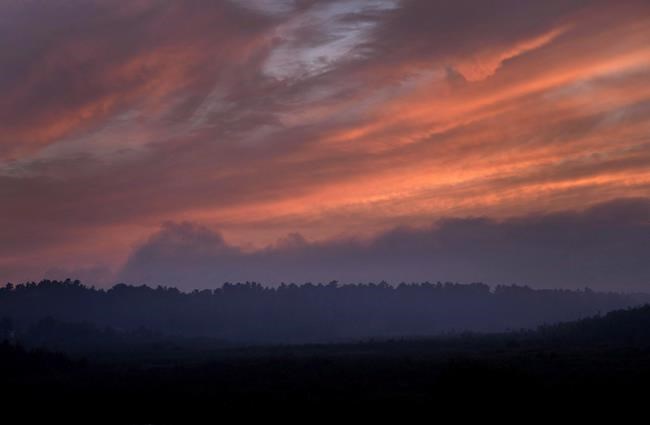Ontario imposes restrictions on industrial operations in northwest as wildfires burn
Advertisement
Read this article for free:
or
Already have an account? Log in here »
To continue reading, please subscribe:
Monthly Digital Subscription
$0 for the first 4 weeks*
- Enjoy unlimited reading on winnipegfreepress.com
- Read the E-Edition, our digital replica newspaper
- Access News Break, our award-winning app
- Play interactive puzzles
*No charge for 4 weeks then price increases to the regular rate of $19.00 plus GST every four weeks. Offer available to new and qualified returning subscribers only. Cancel any time.
Monthly Digital Subscription
$4.75/week*
- Enjoy unlimited reading on winnipegfreepress.com
- Read the E-Edition, our digital replica newspaper
- Access News Break, our award-winning app
- Play interactive puzzles
*Billed as $19 plus GST every four weeks. Cancel any time.
To continue reading, please subscribe:
Add Free Press access to your Brandon Sun subscription for only an additional
$1 for the first 4 weeks*
*Your next subscription payment will increase by $1.00 and you will be charged $16.99 plus GST for four weeks. After four weeks, your payment will increase to $23.99 plus GST every four weeks.
Read unlimited articles for free today:
or
Already have an account? Log in here »
Hey there, time traveller!
This article was published 20/07/2021 (1606 days ago), so information in it may no longer be current.
Ontario imposed new restrictions on mining, rail, construction and transportation industries in the province’s northwest on Tuesday to reduce the likelihood of human-caused wildfires.
The move came as 107 active wildfires burn in the region, with 32 of those not under control.
The restrictions are aimed at high-risk operations that could cause sparks and ignite fires. Certain specific drilling operations, using heavy machinery with rubber tires and no chains, and rail production grinding are among the activities being restricted.

Greg Rickford, the minister of northern development, mines, natural resources and forestry, said the new measures will help the province’s firefighting efforts.
“To continue to protect public safety, it is necessary to increase precautionary measures in the Northwest as the fire situation there continues to escalate,” he said in a statement. “We appreciate the ongoing co-operation of our industry partners and the continued support to the community.”
The restrictions have been imposed under an emergency order currently in place for the northwest and will come into effect on Tuesday.
The wildfires in the northwest have led to evacuations from three First Nations communities — Poplar Hill First Nation, Deer Lake First Nation and Pikangikum First Nation — with more than 2,455 people going to communities such as Sudbury, Timmins, Thunder Bay and Cornwall.
The province said the wildfire hazard is particularly high in the southern Nipigon and Thunder Bay districts as well as in some parts of the Red Lake district.
The fire situation is better in the province’s northeast region, where a total of 14 fires are currently active. No evacuations have occurred in the northeast.
Crews from Nova Scotia, Newfoundland, New Brunswick, Prince Edward Island, Quebec, Wisconsin and Mexico are helping Ontario firefighters battle the blazes.
The northern fires are also having an impact on southern Ontario, where Environment Canada has issued special air quality advisories due to smoke blowing from the northwest.
The advisories for southern Ontario, as well as southern Quebec, were issued late Monday afternoon and include the cities of Toronto and Ottawa. The weather agency warned that smoke is causing poor air quality and reducing visibility.
The advisories further warn that high levels of air pollution due to smoke are possible. Environment Canada said people may experience symptoms such as increased coughing, throat irritation, headaches or shortness of breath.
The agency said conditions were expected to improve Tuesday with the passage of a cold front.
This report by The Canadian Press was first published July 20, 2021.


